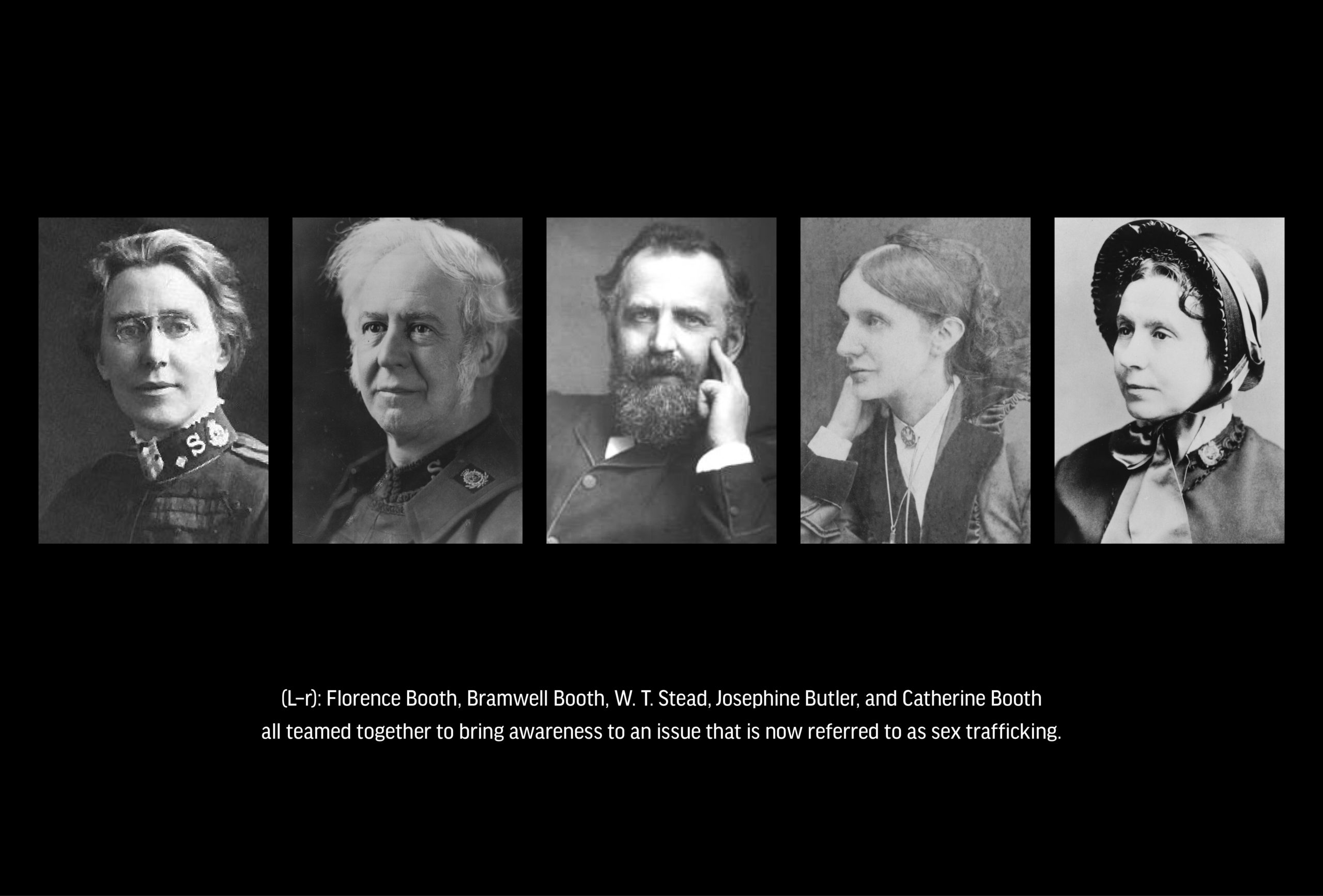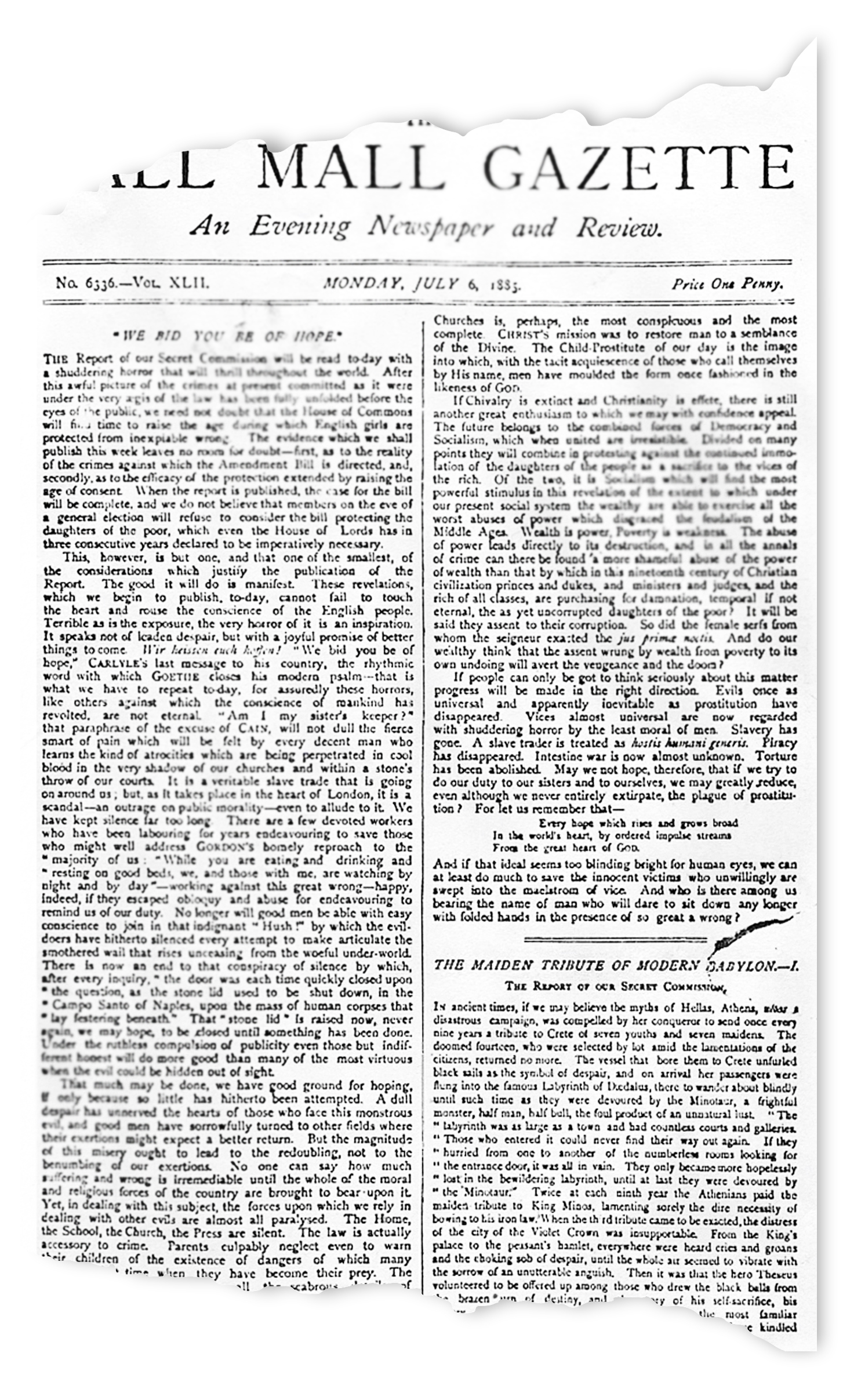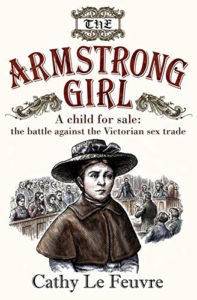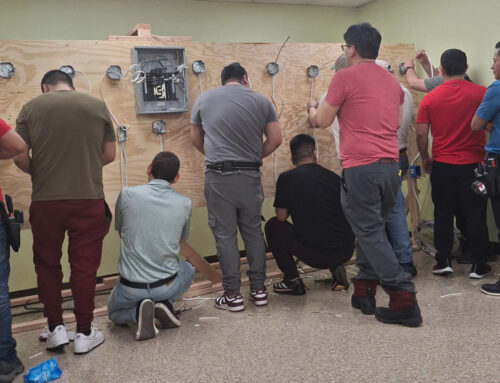
Raising the age of consent
by Warren L. Maye
The Salvation Army’s global influence has caused many pivitoal moments in history. One example transformed the way 19th century London and the world viewed sex trafficking.
The law, as it stood in the early 1880s, said that a young woman of 13 was legally competent to consent to her own seduction. Girls under the age of eight were not allowed to give evidence against people who had abused them, as it was thought that they were too young to understand the oath required in a court of law.
One day, Josephine Butler, a campaigner for women’s rights, wrote a letter to Florence Booth, the wife of Bramwell Booth, the Salvation Army’s Chief of the Staff, concerning the sale of girls into prostitution. Such letters and other correspondence relating to the topic, including letters written by Catherine Booth (wife of Army founder William Booth) to Queen Victoria are archived at the Salvation Army’s International Heritage Centre in London.
Florence Booth, as pioneer leader of the Army’s Women’s Social Work, had gained an insight into the lives of girls working as prostitutes. Through this work, the practice of trafficking girls to be used for immoral purposes, both in Britain and overseas, came to the attention of The Salvation Army.
To acquire an understanding, Bramwell Booth walked the streets of London to see the problem for himself. He took note of the desperate situations in which many of the girls found themselves.
What he saw prompted him to speak with W. T. Stead, a young editor of the Pall Mall Gazette. Stead, 26, was an admirer of The Salvation Army and was horrified to think that girls were being bought and sold. He investigated the claims made by The Salvation Army and published his findings in the Pall Mall Gazette, July 6–10, 1885. The articles appeared under the title “The Maiden Tribute of Modern Babylon.”

The writings played a major role in securing popular support to raise the age of consent. But, a vital part of the plan involved the activists staging the “abduction” of 13–year–old Eliza Armstrong as a case in point. Rebecca Jarrett, a recently converted ex–brothel–keeper, used contacts from her time as a prostitute to fabricate the Armstrong “abduction.”
The case was published in Stead’s Pall Mall Gazette, which received much support from readers. The ensuing public outrage against prostitution eventually led to the passing of the Criminal Law Amendment Act on August 14, 1885. The Act successfully raised the age of consent from 13 to 16 years. News of the decision spread all the way to the United States and to other countries overseas.
However, the abduction ploy also led to a court case against this relatively young cohort: Stead, Jarrett, Bramwell Booth, and Florence Booth. “The Old Bailey,” a law court known as the central criminal court for serious crimes, was the venue for their trial that began on October 23, 1885.
After all had been said and done, Bramwell and Florence Booth were found innocent; but Stead was sentenced to three months in Holloway Jail, even though the jury had recommended mercy. Jarrett, who had played a major role in the plot, along with Louisa Mourez, a midwife involved in Armstrong’s “abduction,” received the longest sentences of all—six months in Millbank Prison. Following Jarrett’s release in April 1886, The Salvation Army cared for her until her death in 1928.
In the long term, the trial helped the Army gain recognition and enabled it to further its social work objectives in Britain and overseas. Among the material relating to the case stored in the archives of the International Heritage Centre, is a document entitled “The Truth about the Armstrong Case and The Salvation Army,” which includes W. T. Stead’s defense, as well as biographical information and personal letters written by Jarrett. These fragile documents can only be observed by researchers who visit the Heritage Centre because photocopies are prohibited. Nonetheless, their impact redefined societal “norms” for many years to come and throughout the world.
More About the Age of Consent
The age of consent is the age at which a person is legally competent to consent to sexual acts in any country and is thus the minimum age of a person with whom another person is legally permitted to engage in sexual activity. As on 2021/2022, The legal age of consent varies from country to country and is from 11 to 21 years old around the world. In some of the Arab countries, there is no legal age of consent, but all sexual relations are forbidden outside of marriage. The laws were designed to prosecute people older than the victims rather than teenagers close in age.
The age of consent in the United States varies from 16 to 18. Some of the Asian and African countries require individuals to be married before they can legally have sex, all of which are highly conservative on issues of gender and sexuality. Europe’s lowest age of consent is 14, which applies in countries including Austria, Germany, Serbia, Italy, and Portugal, while Some of the European countries set 16 to 17 as the age of consent. Several others, including Malta and Vatican City, require one to be at least 18.
Asia: The legal age of consent in Asia for sexual activity varies by jurisdiction, ranging from age 9 in Yemen to age 21 in Hong Kong.
Europe: The age of consent in Europe varies by jurisdiction, they are currently set between the ages of 14 and 18. Most countries set their ages in the range of 14 to 16, and only other three countries, Cyprus (17), Ireland (17), Turkey (18) has their own pattern.
Africa: The legal age of consent in Africa for sexual activity varies from 12 to 21, ranging from age 12 in Sudan to age 21 in Cameroon and Niger.
North America: The legal age of consent in North America relating to sexual activity varies by jurisdiction. Each U.S. state has set its age of consent at either 16, 17, or 18. The age of consent in Canada is 16.
South America: The age of consent in South America varies by jurisdiction, codified in laws which may also stipulate the specific activities that are permitted or the gender of participants for different ages. Across South America it varies from 14 to 18.
- United Nations report posted on PopulationU.com
Read an in–depth account of the Eliza Armstrong trial
Find it on Amazon.
Read more from the latest issue of SAconnects.





